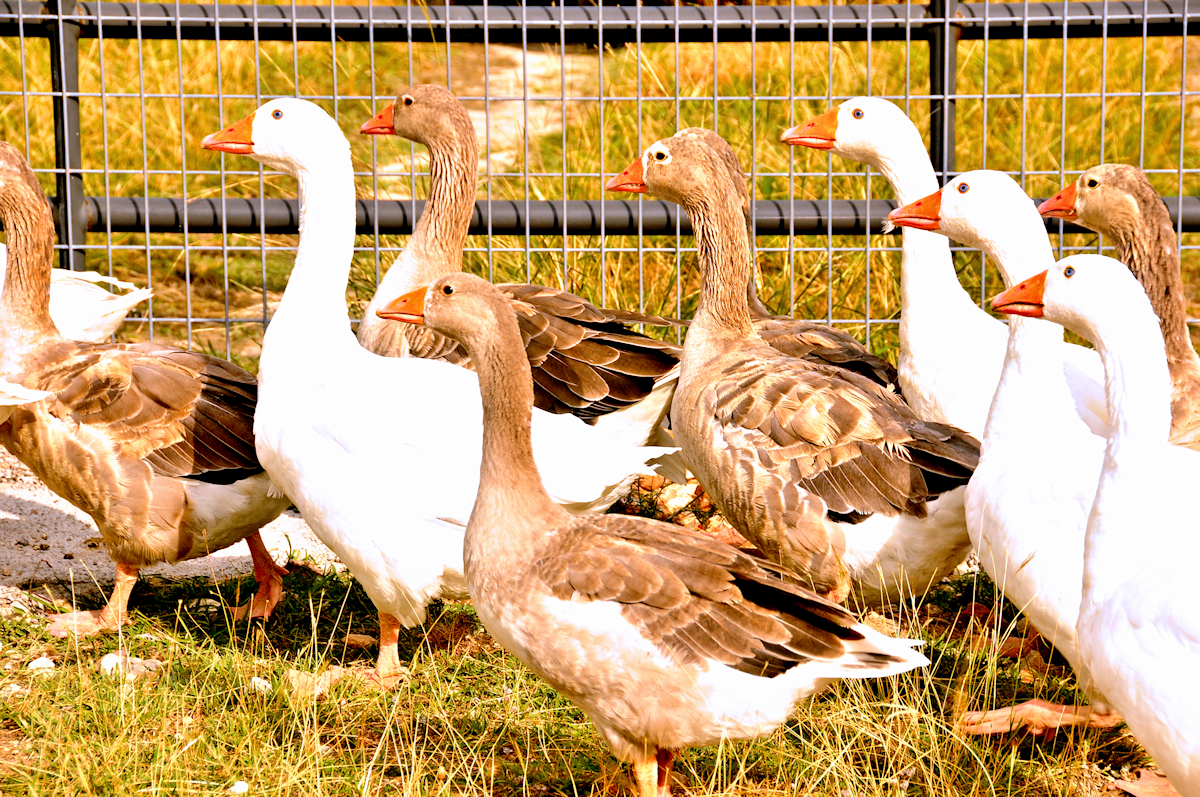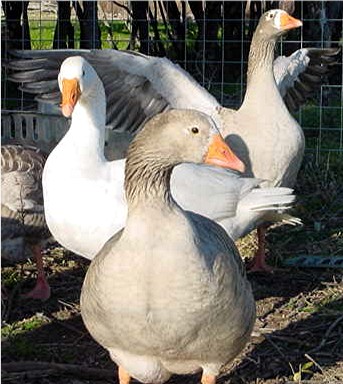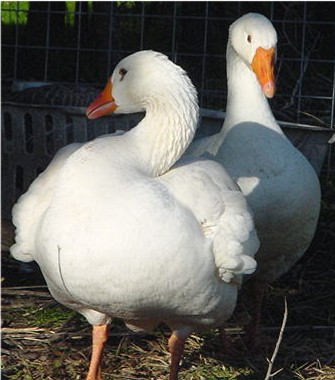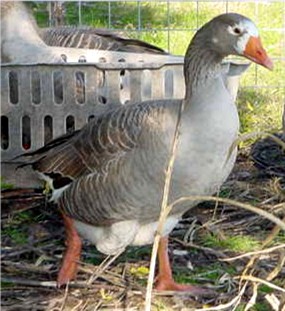
Mature female Pilgrim Goose

 and Phone Numbers Link
and Phone Numbers Link
|
|
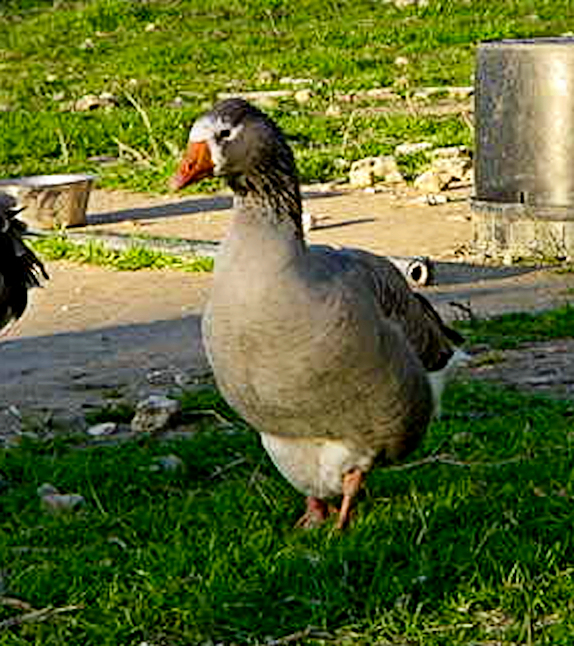
|
These pictures demonstrate the color difference in male and female goslings. | |
Female in center surrounded by four males.
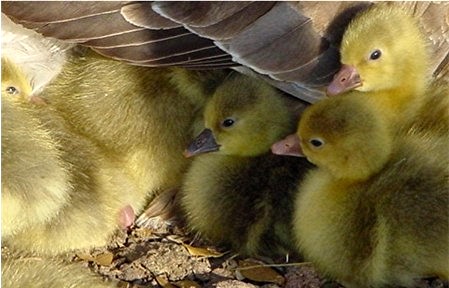
|
Female on far right.
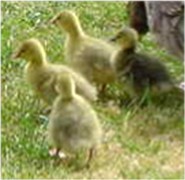
|
|
In both pictures you can easily differentiate the one olive gray female gosling with her dark beak among the several shimmery silvery yellow male goslings with their light beaks. You may also notice that the depth of color appears to change as your angle to the gosling changes. These goslings hatched the night before the larger picture was taken and the smaller picture was taken on the following day. Each day the color difference between males and females increase. | |
|
One Month old Female gosling with parents. Note that the female goose recently molted ... which is usual after hatching. 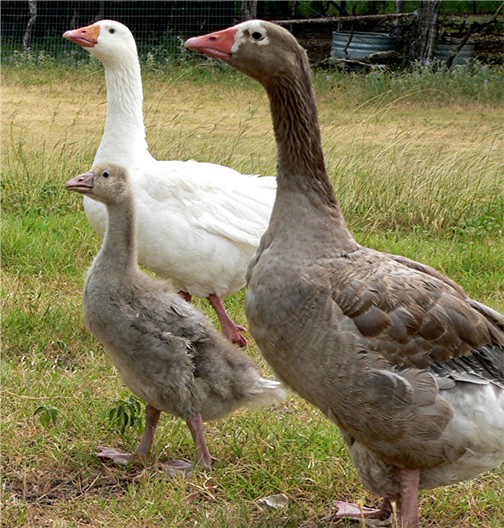
One Month old Female gosling with parents. This adult female, Beauty, was purchased as a young adult and lived here at Lucky Hit Ranch for 19 years, so lived at least 20 years. Note the perfect placement of white on Beauty's head. There is a band of white around the beak that blends in with the white goggles around her eyes! This is the ideal configuration for white on the head of a female Pilgrim! | |
|
Two month old male with unwanted grey spots on head and neck. Many times this "out of place" grey body feathering is replaced by white feathers on the first molt. The grey on the flight feathers and rump (covered by the wings) is highly desirable. The light grey is preferred to dark grey and should be limited to the secondaries, primaries, and rump, where is it not clearly visible until the wings are spread. Pure white Geese (with no grey on rump and wings) are potentially just Embden Geese. Crossing Pilgrim females with white Embden males disrupts the sex link genetics and must never be done. It is vital to select for Pilgrim males with grey rumps and wings to avoid breeding your excellent Pilgrim females with Embden males! Embden males will never have grey rumps or grey secondaries and primaries! In addition, it is my experience that the pure white Pilgrim males carry the genetics for white wings and extensive white spread beyond the correct locations on the mostly Dove Grey female Pilgrims! 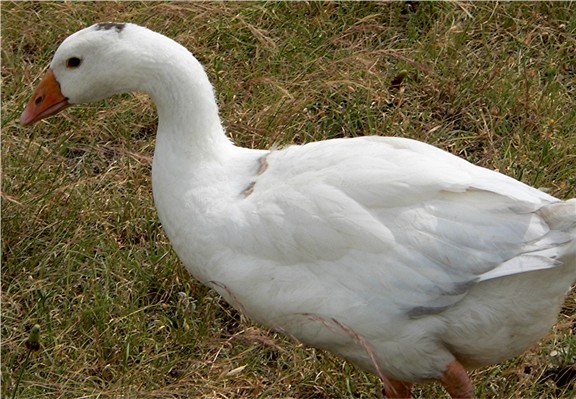
TWO MONTH OLD MALE | |
|
This is the head of a two month old female gosling. Note that the white feathering on the head around the beak and eyes is not complete. Don't worry, this is normal feather color development in young female Pilgrim geese! In my birds, by the time the female is two and sexually mature, the white will have filled in to it's full extent covering the beak area and around the eyes. Hopefully there will be NO white feathers on the neck. 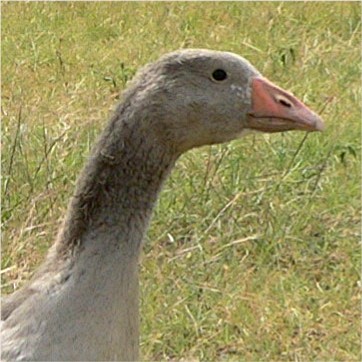
TWO MONTH OLD FEMALE | |
